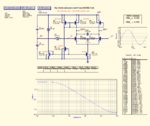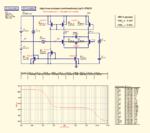tisheebird
Member level 5
Hello,
I have designed a 1 stage op-amp with the bias current of 2uA. ICMR- is 0.7V and ICMR+ is 1.62V. I want to check the output impedance and gain of my op-amp. so could you please suggest what should be the input value so that i can see the output resistance and gain of the system.?
Please guide me with the solution
I have designed a 1 stage op-amp with the bias current of 2uA. ICMR- is 0.7V and ICMR+ is 1.62V. I want to check the output impedance and gain of my op-amp. so could you please suggest what should be the input value so that i can see the output resistance and gain of the system.?
Please guide me with the solution


